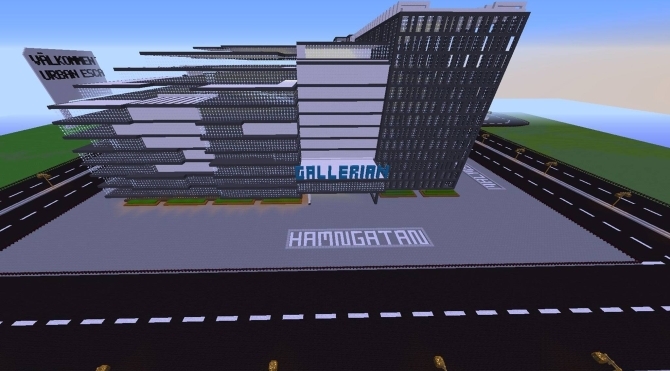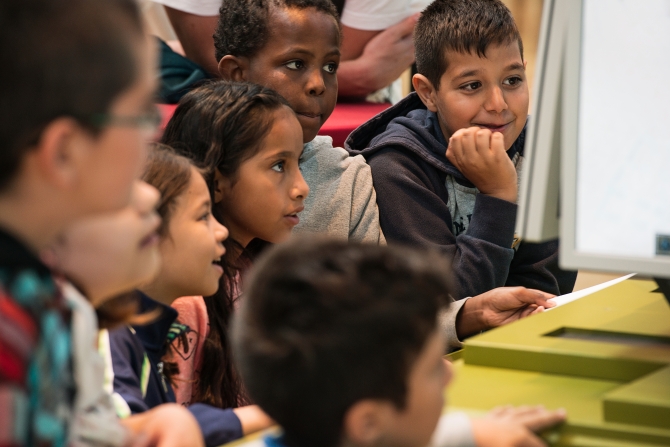A Swedish property developer is claiming a world first — by simultaneously starting a multi-million pound regeneration project in both the virtual and real words.

At the same second bulldozers began demolishing derelict buildings in the centre of Stockholm a group of 10-year-old schoolchildren pressed the button to “blow up” an exact replica of the district built online as part of cyberspace’s Minecraft world.
As part of a unique partnership AMF Fastigheter — which is building the 1.5 million sq ft Urban Escape Stockholm scheme — teamed up with software giant Microsoft to construct the Minecraft replica of the original site. The hugely popular video game allows players to interact to construct buildings and even cities out of textured cubes in a 3D generated world.
All the students, from Loviselund School in Hässelby, near Stockholm, were then allowed to design and rebuild their own unique interpretation of the Urban Escape project using the now “cleared” site on Minecraft.

“We believe in collaboration in the creative process, and as developers of urban spaces we want to engage with Stockholm’s ‘future talents’, the people who will live, work and play in this city,” explained Karolin Forsling, chief development officer at AMF Fastigheter.
“By partnering with Minecraft, we are giving young people a chance to shape one of Europe’s fastest growing cities and we’re inspired by how they have challenged convention and sparked new ideas.”
Forsling added her company will be taking inspiration from the students’ designs in the final delivery of elements such as the hotel and the Urban Escape Rooftops — the Swedish capital’s first public garden space built in the sky.
Scheduled for completion in 2019, Urban Escape Stockholm will be anchored by two hotels and connected at rooftop level by gardens. The scheme will comprise of five buildings, four streets and two squares and include a shopping centre, offices, retail space and restaurants. It will also house the pioneering Epicenter, Stockholm’s first innovation house.

Joke Palmkvist is business unit manager for schools and higher education at Microsoft, which now owns the Swedish developed Minecraft. “This was a unique experience to give students the opportunity to develop new skills in an environment that also challenges them creatively,” she said.
“Minecraft is a natural bridge to working with coding in the classroom, which is a prerequisite for students to understand the digital world. Any of these students could be one of the creators of the next Minecraft, Snapchat or Spotify.”
Previous Post
Henley steps up International Expansion with US Deal